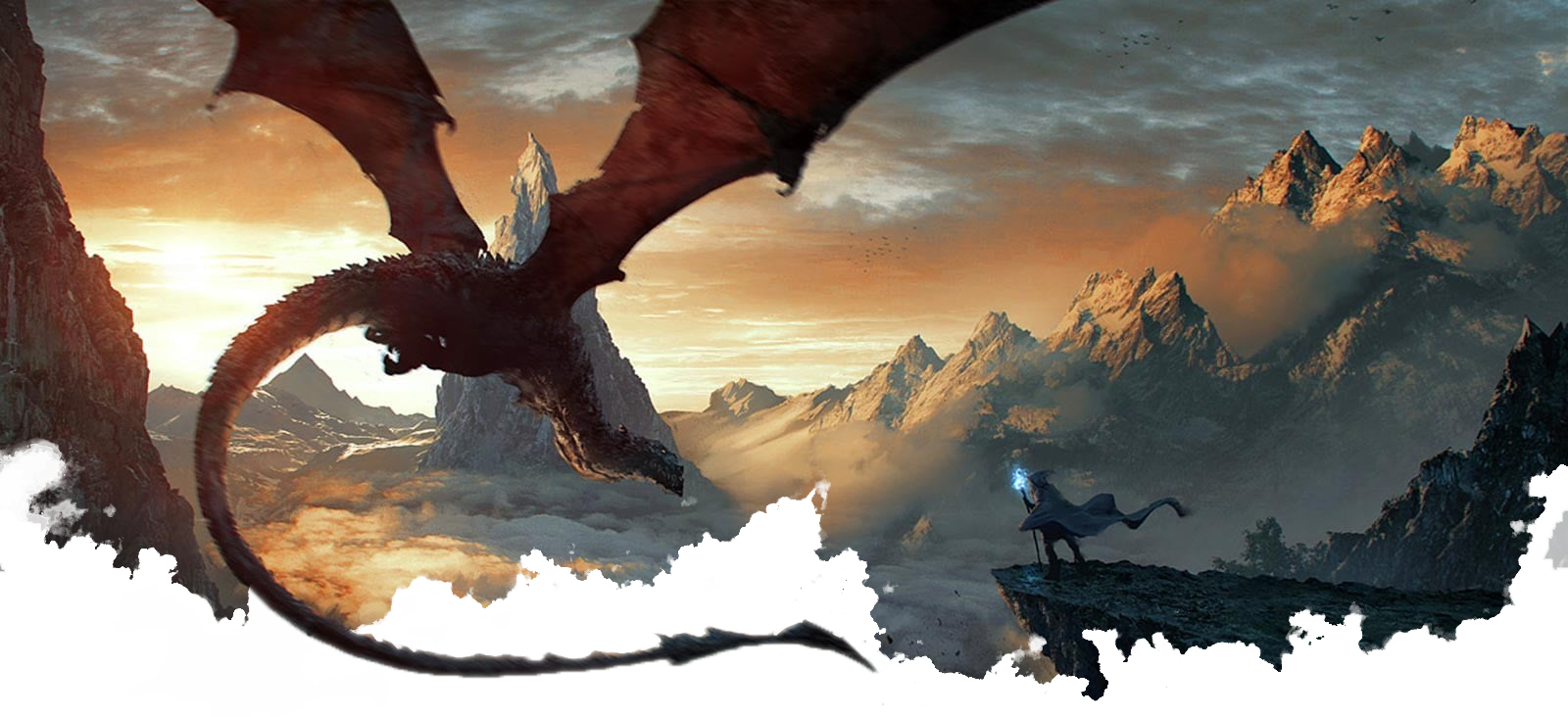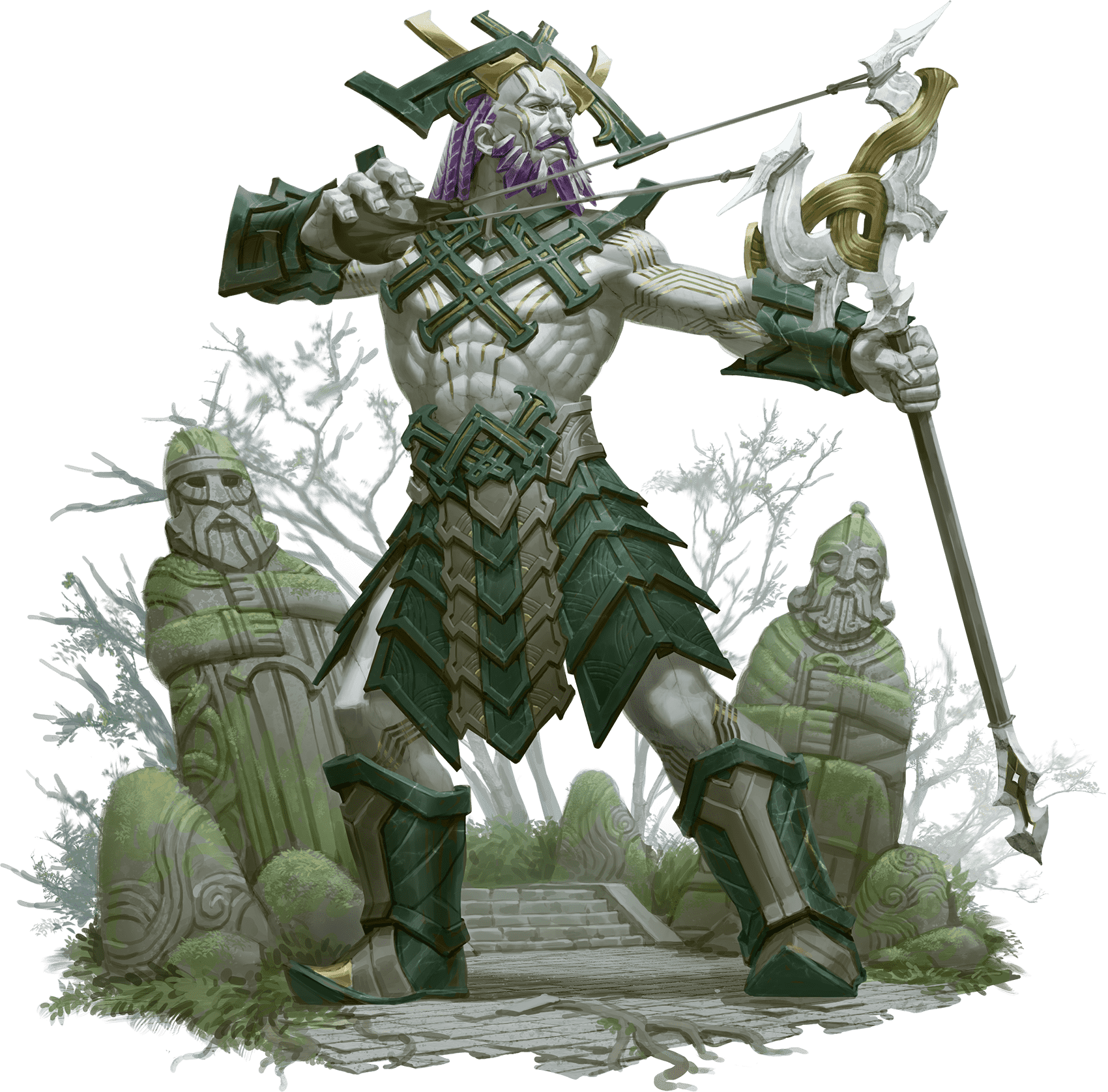Culture
Ordning of Artistry
Among stone giants, mastery of an art ranks as the greatest virtue, and among all the arts, stone carving is held in highest regard. Most stone giants spend their lives in unending pursuit of the perfect artistic creation. Young stone giants practice tirelessly, hoping to prove themselves worthy of assisting the tribe’s best carvers. A stone giant master carver might devote years to finding the best stone before beginning a great work. The best carvers are honored as the leaders and shamans of the tribe, and their hands are seen as holy — literally becoming the hands of
Skoraeus Stonebones as they work.
Of course, not all stone giants have the hands of a god. Those who show little skill in carving are considered pathetic and viewed with a combination of pity and contempt. To determine the ordning beneath the highest levels of artistry, stone giants compete in games of boulder hurling and catching. Their rock-throwing skills suit stone giants well when they have cause to defend their homes or attack enemies. But even where boulder tossing is concerned, artistry is fundamental to the effort. A stone giant hurling a boulder isn’t only performing a feat of strength but is also striving to display consummate athleticism and grace.
Those who can’t infuse artistry into every aspect of their lives fall to the lowest rungs of the ordning and are often pushed literally to the perimeter of stone giant society, to serve as guards on the tribe’s most distant borders or as hunters that wander beyond those borders. As such, the stone giants that are first encountered by outsiders are almost always the least successful members of stone giant society and the poorest examples of the ideals stone giants aspire to. They are the brutes and boors cast out by a society of artists and philosophers.
For a people that spend their lives mostly in darkness, stone giants have a nuanced appreciation of the effects of shadow and light. They design carvings to produce shadows in specific ways when a light source is placed in the proper location. Without both the light and the shadow, the carving is incomplete and can’t be viewed in its true form. For example, a tale carving made with these special techniques tells one story when it’s viewed in flat, dim light, but it reveals a second, much deeper tale with the addition of proper illumination.
Speaking Stones
Although they are unsurpassed masters of tale carving, stone giants also employ mundane writing in their stone tableaux. Names, dates, and descriptions appear in their tales, often as part of an image (a character’s arms or armor might incorporate runic letterforms, for example).
Stone giants also make extensive use of the carved word through “speaking stones.” A speaking stone is an upright stone cylinder into which writing is carved in a descending spiral. When the cylinder is turned in one’s hands (a feat impossible for any creature of human size and strength) or when it’s rotated with its base placed in a cradle designed to balance it upright, the writing can be read as the cylinder goes around. The message wraps around the pillar like the threads of a screw, but in two alternating spirals. The first is read from top to bottom as the cylinder rotates; then the cylinder must be flipped over to reveal the second line of script, also read from top to bottom.
Speaking stones are sized to match the length of the message they carry, so there is no blank space on a stone. A cylinder that turns out to be too long or too thick, so that the message ends before the entire surface of the stone is used, is considered poor artistry. Tradition and honor demand that it be crushed into gravel and a new speaking stone begun.
Gentle Giants?
Newcomers who know only about the stone giants’ focus on artistry might think them to be a peaceful and reasonable people. Among their own kind, they tend to be so. But outsiders, particularly non-giants of any sort, are unwelcome in the stone giants’ caverns, and trespassers aren’t treated politely.
A creature’s first sign that it has intruded into stone giant territory might be a boulder, thrown seemingly from nowhere and exploding into shards against a nearby rock. Those who know anything about stone giants understand that this wasn’t a miss; it was a measured warning, and the next stone won’t land so harmlessly.
It’s possible for travelers to negotiate with stone giants for safe passage through their territory, if someone in the group speaks Giant and the giants are offered a tribute. Beautiful and large furs, exotic food, or art objects are suitable tributes; money is a weak inducement for all but the lowest of stone giants. If offered such enticements, one or two giants might come forward to negotiate while others remain at rock-throwing range.
To unfamiliar eyes, stone giants encountered on the fringes of their territory look and behave like primitives. First, personal adornment has little value in the ordning of stone giants, so their clothing tends to be simple and practical. Second, these giants are the least accomplished members of the clan. They are good at ambushing and throwing rocks, but they aren’t leaders or even typical examples of their kind.
Even if the giants accept the offered tribute as permission to enter their territory, they might demand a higher price to pass through it. Usually this “gift” is a service of some kind — a task the giants would rather not do or that they’re unable to perform, such as chasing kobolds out of a narrow cave or retrieving something from deep within a lake. (Stone giants are poor swimmers; they dislike entering water at all unless they can easily walk across the bottom.)
Stone giants rarely keep pets. They sometimes cultivate colonies of giant bats at the edges of their territory, both for a food source and as a warning system against intruders. They also don’t mind sharing their caves or warrens with cave bears, fire beetles, and other beasts that mean them no harm. They keep their other subterranean neighbors at arm’s length. Purple worms are their greatest bane, because a hungry worm chews through everything it encounters, including the giants’ finest carvings and sculptures. Xorns are among the few creatures that are appreciated by stone giants; their passage through the earth causes no damage, and their alien modes of thought make them interesting to talk with.
Life in the Dark
Stone giants see well in darkness, and the caves and grottoes where they live are kept dark most of the time. They don’t prefer to use illumination for any purpose that’s not related to creating or displaying art.
Most of a giant’s waking hours are taken up with meeting its responsibilities, whether that is a low-ranking pursuit or an artistic one. A tribe’s chieftain or another leader such as a shaman determines when the tribe’s guards and hunters are on or off duty. Other giants align their sleeping and waking schedules with stone giants higher in the ordning from whom they seek to learn.
Masters of the arts can ask much of lower-ranking students, including waking early to be sure the master has food upon rising, or staying awake while the master sleeps to create something the master will need (or will judge) upon waking. For one reason or another, about three quarters of a tribe’s members are awake at any given time.
When outside their settlements, stone giants travel almost exclusively in darkness or — when they dare to visit the surface world — at night, the better to avoid the glaring dreams and visions that would assail them during daylight. A stone giant that visits the surface for too long or is forced out from underground risks becoming lost in the realm of dreams, living ever after as a twisted version of its former self that the giants call a dreamwalker.
The Linjenstein
When a stone giant reaches the end of its tremendously long life, it joins the Linjenstein (“ancestors of stone”). The term refers both to the giants’ forebears and to the chamber inside each stone giant settlement where they “reside.”
A dead (or sometimes merely dying) stone giant is carried into the ancestors’ chamber and leaned upright against the end of one of the rows of dead already there. The body gradually calcifies over many decades, until it becomes indistinguishable from an enormous stalagmite.
Family members visit this tomb-chamber often to pay respects to their ancestors. Some of these visits, especially by elderly giants who know they will soon take their place there, last for weeks or even months.
Characteristics
Physical features
Stone giants are made of the same kinds of rocks that form their home—marble, granite, or even basalt. Their stone bodies not only protect them from attack, but also provide them with an additional outlet for self-expression. They often carve runes into their skin, which serve a wide variety of artistic and cultural purposes.





Comments